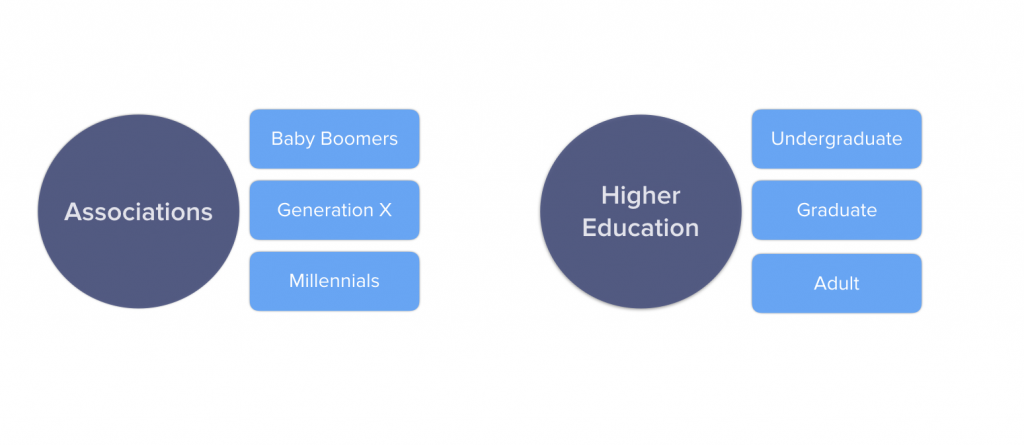| Nov 9, 2017
What associations can learn from higher education marketing
 In working with both higher education marketers and association marketers, I’ve noticed some interesting similarities between the two sectors. For one, their missions are remarkably similar. They help people reach their professional goals whether it’s through education, training or networking opportunities.
In working with both higher education marketers and association marketers, I’ve noticed some interesting similarities between the two sectors. For one, their missions are remarkably similar. They help people reach their professional goals whether it’s through education, training or networking opportunities.
However, while higher education institutions have historically focused primarily on younger audiences, associations have only more recently reenergized their efforts toward attracting a younger generation. Due to natural attrition, they’re seeing a decline in their Baby Boomer membership, and beginning to realize that Millennials have very different attitudes on the value of belonging to an association than their predecessors had.
As associations strive to grow membership among Millennials, the higher education marketing sector offers lessons that can inform association marketing efforts.
For example, one of the common challenges many associations face is meeting the needs of different audience segments. A recent MGI report found that out of 267 associations surveyed, on average, baby boomers make up 39 percent of membership while Millennials and Generation X make up 17 and 29 percent, respectively.
The same report also found that most associations, almost 60 percent, segment marketing based only upon membership level or type. This means that a common “professional-level” membership likely includes members from multiple generational groups including Baby Boomers, Millennials and Generation X. Because professional-level memberships lump together members of varied age groups, associations may neglect generationally-conscious marketing if they only segment based on membership type. On top of that, the same report found that 20 percent of associations simply do not segment marketing campaigns.
In contrast, higher education institutions have for decades understood that the way to appeal to a traditional prospect — a 17-year-old high school senior — is much different from marketing geared toward an adult student. Segmenting marketing campaigns has allowed universities and colleges to emphasize school benefits that matter most to each age group. For example, a traditional student may be more interested in campus life whereas an adult student would value program flexibility.
A similar approach would allow associations to appeal to Millennials differently from how they may approach baby boomers or Generation X. For example, by considering the differences in how each generation prefers to be engaged and the type of association resources/offerings they find most valuable, associations can better segment their campaigns and write more compelling messaging.
